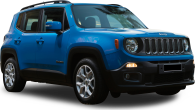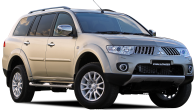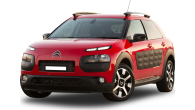The Nissan X-Trail has been around for 21 years now across three generations, and in that time has become a family favourite.
But the outgoing model was around for a long time and it was being left behind by its newer and shinier rivals.
The pandemic and global parts shortages pushed out the launch of the new X-Trail that was revealed two-and-a-half years ago, but it's finally landed on Australian shores.
Can Nissan make up for lost time with the new X-Trail, or have Australian buyers moved on?
Nissan X-Trail 2023: ST (2WD)
| Engine Type | Inline 4, 2.5L |
|---|---|
| Fuel Type | Unleaded Petrol |
| Fuel Efficiency | 7.4L/100km (combined) |
| Seating | 5 |
| Price From | $29,590 - $35,640 |
| Safety Rating |
|
Does it represent good value for the price? What features does it come with?
8 / 10
For the first time, Nissan will offer an ePower hybrid version of the X-Trail from early next year, which will compete with the Toyota RAV4 hybrid and more, but we only sampled the petrol-powered X-Trail on this launch so we will focus on that in the review. Check out Tung Nguyen's international launch review of the ePower model here.
Nissan has dropped the manual for the new-gen X-Trail and the model grades include ST, ST-L, Ti and Ti-L - the latter is a new addition.
.jpg)
Pricing has increased by more than $4000 for the new base ST front-wheel drive (FWD) auto compared with the outgoing equivalent grade. It now starts from $36,750 before on-road costs.
Both the ST and mid-range ST-L are available in two and all-wheel drive, and the AWD is a seven seater. That adds about $3000 to the price.
.jpg)
Topping the range is the flagship Ti-L from $52,990, and then for a few grand more you have those coming hybrids in Ti and Ti-L guise.
Both the Ti and Ti-L are five-seaters and they drive all four wheels.
.jpg)
Standard equipment in the base ST include LED head- and tail-lights, 17-inch alloy wheels, roof rails and an 8.0-inch multimedia touchscreen with Apple CarPlay and Android Auto.
ST-L grades gain a 10-way power driver's seat, fog lights, leather steering wheel, auto-dimming rear-view mirror, heated front seats, sliding rear 20/40/20 seats, 18-inch alloy wheels, the handy split cargo system (more on that later) and dual-zone air conditioning.
.jpg)
Moving up to the Ti adds a panoramic sunroof, powered tailgate, a 12.3-inch multimedia touchscreen with sat-nav, wireless phone charger, a 12.3-inch digital instrument panel, and a 10.8-inch head-up display.
Finally the top-spec Ti-L comes with quilted Nappa leather-appointed seats, rear heated seats, heated steering wheel, hands-free power tailgate, rear sunshades and a 10-speaker Bose audio system.
X-Trail pricing and spec lines up closely with the mechanically related Mitsubishi Outlander. It's slightly more expensive than a Kia Sportage, Hyundai Tucson, and Toyota RAV4, but the generous standard features list - that's much more expansive than the old model - ensure it's still good value for money.
.jpg)
Is there anything interesting about its design?
8 / 10
There has been a clear evolution from the original X-Trail from 21 years ago to this new version. The previous model was more rounded off with softer lines but the latest version brings back some of the boxiness, in a good way.
The X-Trail is a handsome SUV in the metal, and despite sharing underpinnings, doesn't look at all like the Mitsubishi Outlander.
The split headlights and Nissan's signature grille up front give it a modern look that is unmistakably Nissan.
The squared off rear end design and nicely executed tail-light cluster ensure a coherent overall look. It's another example of great design in the medium SUV segment alongside the Sportage and Tucson.
To say that the interior design represents a huge leap over the previous X-Trail would be an understatement. The nine-year old model was desperately in need of a refresh and on this, Nissan has done a great job.
There are fewer controls on the centre stack, with a lot of them housed in the touchscreen, and the dash layout and overall cabin design is top notch. The finish on the grades we tested (ST-L, Ti and Ti-L) is also high quality.
The only complaint would be that there isn't a lot to differentiate between the ST-L and top-spec Ti-L interior.

How practical is the space inside?
8 / 10
The complete overhaul to the X-Trail interior is more than just skin deep. Yes, it's much more visually appealing, but it is a very practical, flexible cabin - especially in ST-L grade and beyond.
Up front, the dash layout is neat and far less busy than the old model, and depending on the grade it has soft-touch, two-tone materials. The steering wheel looks good and has clear controls and the multimedia screen juts out at the top of the centre stack.
.jpg)
ST and ST-L get an 8.0-inch setup that is more basic, but it's easy to use, while other grades gain a 12.3-inch screen with Nissan's latest tech. It has much more functionality and addresses a criticism of the previous-Trail - old in-car tech. It's a top notch system with nice graphics, and it's not overly complicated to navigate.
There are no problems with the clarity of the 10.8-inch head-up display on higher grades, while the customisable 12.3-inch digital driver display in Ti and up is also well executed.
The seats in all grades we sampled are comfortable and offer decent support. Naturally the higher grades get the nicer trim.
.jpg)
The new X-Trail offers family friendly storage solutions including decent sized cupholders up front, ample room for big bottles in the doors, and a huge central bin with nooks, but the glovebox isn't massive.
Under the console is another large tray for storage with a rubber like mat to ensure items don't slide when driving. There's a USB-A and C port up front, and Ti and up have a wireless charger.
.jpg)
The rear doors have a massive aperture, opening to 85 degrees, making getting in and out as well as loading items and small humans, much easier.
Rear passengers will find another set of USB-A and C ports, rear lower air vents, map pockets, decent bottle storage in the doors and a fold-down armrest.
Despite retaining the same 2705mm wheelbase as the previous X-Trail, there's more space in the rear. In fact behind my six-foot (183cm) driving position, I had loads of leg and knee room, as well as ample toe room. Even in the higher grades with the panoramic sunroof, there's no shortage of headroom for taller folk.
It has ISOFIX points for the two outboard seats and top tethers for all three second-row seats. The third row in the seven-seat X-Trail is really for occasional use only as it's tight back there - much like other medium SUVs with a third seating row.
.jpg)
The base ST has 60/40 split-fold rear seating that reclines, while all other grades have 20/40/20 split seats that also recline, with a centre armrest or pass-through.
The ST also misses out on the X-Trail's storage party trick - its ‘Divide-N-Hide' boot. Basically, the boot floor is split into two removable panels that lift and slot in vertically so you can separate and hide items in the boot. It also includes some limited under-floor storage for flatter items. It's a neat and useful feature. The X-Trail has a temporary spare wheel.
What are the key stats for the engine and transmission?
7 / 10
Until the early 2023 launch of the ePower hybrid next year, all versions of the X-Trail use the same naturally aspirated 2.5-litre four-cylinder petrol engine delivering 135kW of power and 244Nm of torque.
This is a carryover engine that has been revised by Nissan for the new-gen X-Trail and it gets a 9kW boost in power over the old model.
.jpg)
The engine is matched with a continuously variable transmission (CVT) driving the front or all four wheels, depending on the model grade.
Naturally, these power and torque outputs match the Mitsubishi Outlander with which it shares a platform and engine, but it's not quite as powerful as the 2.5-litre Mazda CX-5. It does have more poke than a petrol RAV4 and the 2.0-litre versions of the Tucson and Sportage.
How much fuel does it consume?
7 / 10
The official combined cycle fuel consumption figure for the X-Trail FWD is 7.4 litres per one hundred kilometres, and that increases to 7.8L for the all-wheel drive version.
It also emits 174 to 183 grams per kilometre of CO2, depending on the driven wheels.
The ePower hybrid sips 6.1L, which is an improvement compared with the petrol version, but can't match the 4.8-litre figure of the RAV4 hybrid.
Warranty & Safety Rating
What safety equipment is fitted? What safety rating?
8 / 10
One criticism of the old X-Trail was that its age meant it missed out on some of the modern safety features found in rivals.
But that's no longer the case. Just some of the standard gear from base ST grade includes front auto emergency braking with pedestrian and cyclist detection, rear AEB with pedestrian detection and a cross traffic alert, lane departure warning and adaptive cruise control.
.jpg)
From ST-L and up, Nissan adds its ProPilot system that is a combination of lane keep assist, traffic jam stop and go and adaptive cruise control, allowing for semi-autonomous driving in certain conditions.
There are a number of alerts when ProPilot is active which can be annoying, but the system is well calibrated and accurate.
.jpg)
Other gear in the ST-L and beyond includes front parking sensors, a surround-view monitor and tyre pressure monitor. All grades have a front centre airbag.
The X-Trail has just been awarded a five-star ANCAP safety rating. It scored 97 per cent for the Safety Assist testing category which Nissan says is the highest score out of any medium SUV on sale in Australia, including the premium models.
What does it cost to own? What warranty is offered?
8 / 10
Nissan X-Trails come with a five-year, unlimited kilometre warranty.
Buyers also have access to capped-price servicing for the first six services, and it can be pre-paid for the first three, four or five services. The average cost is approximately $500 per service over that six-year period.
.jpg)
The schedule for the servicing is every 12 months or 10,000km, which lags some of its rivals that have a 15,000km term.
The X-Trail also comes with five years of free roadside assist.
What's it like to drive?
8 / 10
Clearly Nissan has made significant improvements to the X-Trail's design, interior and tech offering. But how much better is the drive experience compared to the old model?
Thankfully, the new-gen model marks a big leap over the previous car.
The 2.5-litre unit is responsive from a standing start and given it doesn't have a turbo, there's no lag so you're off at the lights quick sticks.
.jpg)
Nissan has retained the CVT for the new X-Trail and despite some flare when the engine is pushed hard, it's a perfectly fine match for the powertrain.
The steering is precise and has some weight to the helm. I think this is a better setup than the Outlander's which feels almost too sensitive.
But the biggest revelation in the new X-Trail is the ride quality. Even with the 19-inch wheels of the Ti, the X-Trail soaks up potholes and speed bumps incredibly well.
.jpg)
Our launch drive route took in some shockingly pockmarked roads that have been impacted by terrible weather in Victoria, as well as a lengthy stretch of speed bumps in outer Melbourne, and the Nissan handled both beautifully. You'd struggle to find a better riding medium SUV than the new X-Trail.
On winding roads, the X-Trail reveals that it's more than just a family hauler. There's some light body roll, but it manages to hold on in twisty sections, thanks to that well-tuned independent suspension setup.
It's also much more refined than the old model when it comes to cabin noise. The interior is well insulated from outside noise, barring some road noise on coarse chip roads.
.jpg)
Verdict
There's virtually no area in which the new X-Trail isn't a drastic improvement over the previous version.
It's missing very little when it comes to standard equipment, it matches - and sometimes bests - its rivals when it comes to in-car and safety tech, it looks great, has a flexible interior, takes a giant leap when it comes to overall refinement, and despite the price increase, is still affordable against its competitor set.
The X-Trail is now right up there as a top pick for medium family SUVs in Australia.
Pricing Guides


.jpg)
.jpg)
.jpg)
.jpg)
.jpg)
.jpg)
.jpg)
.jpg)
.jpg)
.jpg)
.jpg)
.jpg)
.jpg)
.jpg)
.jpg)
.jpg)
.jpg)
.jpg)
.jpg)
.jpg)
.jpg)
.jpg)
.jpg)
.jpg)
.jpg)
.jpg)
.jpg)
.jpg)
.jpg)
.jpg)
.jpg)
.jpg)
.jpg)
.jpg)
.jpg)
.jpg)
.jpg)
.jpg)
.jpg)
.jpg)












































.jpg)
.jpg)

.jpg)

